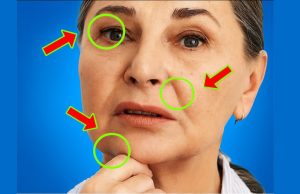It’s easy to think your nails only serve a few purposes — to look good, to help you open stuff, or to scratch. You may buff, trim and paint them, but have you really looked at your nails — their color, thickness, or texture?
If you haven’t, you might want to. The state of your nails can provide clues about various health problems. Taking a good look at your nails regularly is one more way to keep an eye on your health. If you see signs that something may be wrong, you’ll know it’s time to talk to your doctor.
Here are five signs to look for in your nails that can reveal important information about your health.

1. Shape of the nails
Ideally, healthy nails assume a thin and naturally-curved upward shape. Some differing shapes and health indicators include:
– Proximal inflammation, i.e., a rise in the surface of the finger at the end of the nail bed, can indicate a skin infection or lupus.
– Clubbed nails have a bulbish appearance and a white pigmentation. This nail shape is linked to diseases of either the bowels, lungs, or heart and sometimes is an symptom of ⒶⒾⒹⓈ.
– Spoon nails the nails have a concave appearance and are curved inwards. Spoon nails could be a sign that the liver is absorbing too much iron (hemochromatosis) or another health issue such hypothyroidism.
2. Color of the nails
Normally, your nails should be a slightly pink hue. A strong deviation from this shade could be an indicator of underlying pathologies. A list of hues and possible indicators include:
– Greenish-yellow nails signal the likelihood of bacterial infection.
– Blueish nails indicate cyanosis, i.e., low blood oxygen level in the body.
– White streaks running along the nail surface could be a symptom of a kidney infection.
– White nails with zero pink pigmentation, as seen in health nails, could serve as an indicator of liver disease.
– Red streaks present in the nail could indicate heart valve issues.
3. Texture of nails
Healthy nails have a smooth texture all through their surface.
Nails with numerous holes or dips, i.e., rutted or pitted nails, indicate underlying pathologies such as zinc deficiency, tissue disorder, psoriasis, or alopecia areata.
Similarly, nails with even-spaced parallel ridges called Beau’s lines signal pre-diabetes, diabetes, zinc deficiency, or psoriasis.
4. General appearance
Healthy nails show even texture and quality all through their length. A deviation from the ideal appearance could serve as a symptom of some underlying pathology.
Dry/Cracked or brittle nails can be symptoms of hormonal imbalance or bacterial infection. Dry or brittle nails usually arise due to thyroid disorders, making the affected nails more susceptible to injuries, and nails can become more fragile or powder-like following fungal infection.
It should be noted that these visual notes serve as indicators of what could be a symptom rather than serve as a definite confirmation. It is more than likely that your nails and health are completely fine, even if they look a little different than they did when you were younger, and small differences can be attributed to age or other very normal circumstances. As with all information related to personal health, it’s always best to consult a doctor if you have any questions.
The importance of practicing good nail hygiene can also be important. Simple habits such as taking necessary supplements, manicures and abstaining from unhygienic habits (nail-biting, forceful removal of cuticles, use of chemical products) go a long way in fostering good nail health. It is equally vital to note your general lifestyle and indulge in practices that improve your overall health and well-being.
References: pennmedicine.org, positivewords.co




















